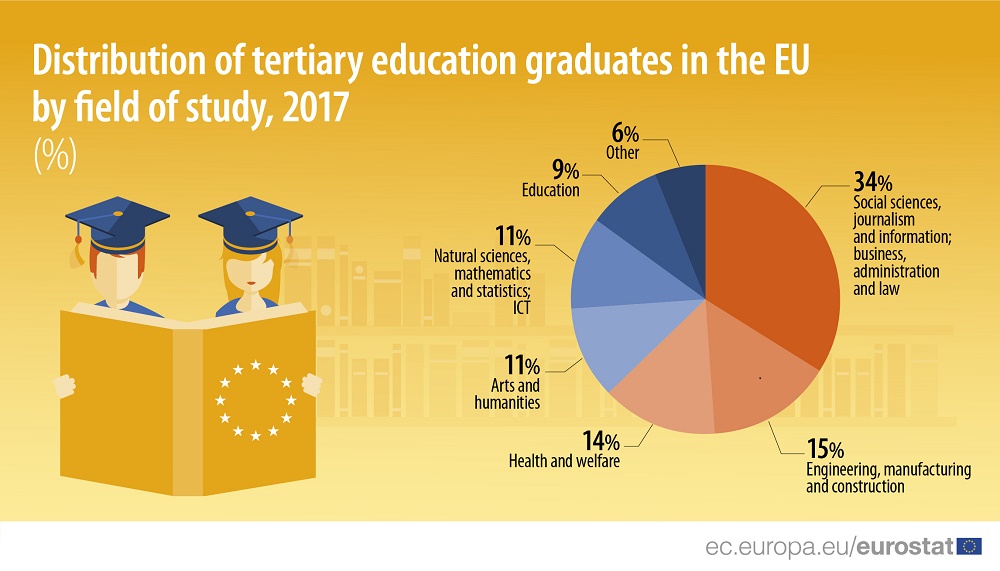It is estimated that approximately 4.8 million students graduated from tertiary education establishments in the European Union (EU) in 2017.
More than one third (34%) of these students graduated in social sciences, journalism, information, business, administration or law. Other fields of study with sizeable proportions of graduates in 2017 were engineering, manufacturing and construction (15% of graduates), health and welfare (14%), arts and humanities (11%), natural sciences, mathematics, statistics and Information and Communication Technologies (ICT) (11%) and education (9%).
When compared with the EU average, some EU Member States had a particularly large or a particularly small share of tertiary education graduates in these different fields of study:
Social sciences, journalism, information, business, administration and law
The share of graduates was relatively low in Finland and Spain (both 26%), where they accounted for just over one quarter of all graduates in 2017, while the highest shares were registered in Luxembourg (56% of all graduates) and Bulgaria (46%).
Engineering, manufacturing and construction
There was a relatively low share of graduates in Luxembourg, the Netherlands, Malta, the United Kingdom, Ireland and Cyprus (all below 10%), compared with the relatively high shares recorded in Germany (22%), Portugal (21%) and Austria (20%).
Health and welfare
The share of graduates in health and welfare was below 8 % in Cyprus, Germany, Luxembourg, Austria and Hungary, and highest in Belgium (27%), Sweden (23%), Finland and Denmark (both 21%).
Arts and humanities
In arts and humanities the share of graduates at tertiary level was below 8% in Sweden, Bulgaria, Poland, Cyprus, Czechia, Latvia, Slovakia and Austria, and above 14 % in Italy (16%) and the United Kingdom (15%).
Natural sciences, mathematics, statistics and ICT
In Cyprus, Belgium and Lithuania, the share of graduates in natural sciences, mathematics, statistics and ICT was below 7%, while it was highest in the United Kingdom (17%), Ireland (15%), Germany and Estonia (both 14%).
Education
The proportion of graduates in the field of education was below 5 % in Italy, Latvia, France and Portugal, while the highest shares were observed in Cyprus (23%), Spain and Hungary (both 17%).
The source data are here.
This news item marks the International Day of Education (24 January).
Note
Tertiary education is defined as the level of education following secondary schooling and is provided by universities and other higher education institutions.
Further information
For more information on this topic, covering students, teaching staff and expenditure, take a look at the latest Statistics Explained article on tertiary education statistics.
To contact us, please visit our User Support page.
For press queries, please contact our Media Support.


